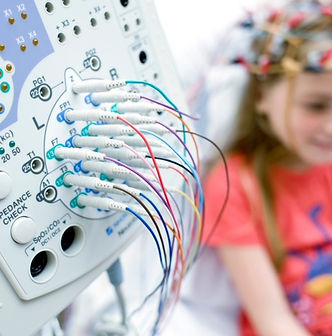
Brain Stimulation TMS Therapy and Autism: A New Frontier in Treatment
- Aug 9, 2023
- 3 min read
Updated: Aug 30, 2024
Autism Spectrum Disorder (ASD) is a complex neurodevelopmental condition that affects millions of individuals worldwide. Characterized by challenges in communication, social interactions, and repetitive behaviors, ASD presents unique difficulties for those who live with it, as well as their families and caregivers. Traditional therapies for autism often focus on behavioral, educational, and psychocognitive interventions, but the search for more effective treatments continues. One promising development in this area is Transcranial Magnetic Stimulation (TMS) therapy, a non-invasive brain stimulation technique that is showing potential as a groundbreaking treatment for individuals with autism.
Understanding Autism and the Brain
To comprehend how TMS can benefit those with ASD, it’s important to first understand the neurological aspects of autism. Individuals with ASD often experience imbalances in brain activity, particularly in regions like the prefrontal cortex (PFC), which is responsible for higher cognitive functions such as decision-making, organization, and social behavior. These imbalances may result from disruptions in the normal activity of excitatory and inhibitory neurons, which can affect communication pathways in the brain and contribute to the symptoms associated with autism.
What is TMS Therapy?
Transcranial Magnetic Stimulation (TMS) is a non-invasive procedure that uses magnetic fields to stimulate nerve cells in specific areas of the brain. The treatment involves placing an electromagnetic coil on the scalp, which generates brief magnetic pulses that penetrate the skull and reach the brain tissue. These pulses can either increase or decrease neuronal activity, depending on the frequency and intensity used, allowing clinicians to target and modulate specific brain regions.
TMS therapy is already approved by the FDA for treating conditions like depression and anxiety, and it is now being explored as a treatment option for a variety of other neurological and psychiatric disorders, including autism.
How TMS Therapy Works for Autism
In individuals with autism, TMS therapy is typically focused on the prefrontal cortex (PFC), an area of the brain that plays a key role in social behavior, executive functioning, and emotional regulation. Research suggests that the PFC in individuals with autism may exhibit irregular patterns of neuronal activity, which can contribute to difficulties in these areas.
TMS therapy works by delivering magnetic pulses to the PFC, which can help to rebalance the activity of excitatory and inhibitory neurons. This rebalancing can potentially improve the brain’s communication pathways, leading to enhanced cognitive function and better regulation of social and emotional behaviors.
Potential Benefits of TMS Therapy for Autism
Although TMS therapy is still being studied for its effects on autism, early research and clinical trials have shown promising results. Some of the potential benefits of TMS therapy for individuals with autism include:
1. Improved Social Interaction: TMS therapy may help to enhance social skills and reduce social anxiety, making it easier for individuals with autism to engage in meaningful interactions.
2. Reduction in Repetitive Behaviors: By modulating the brain regions associated with these behaviors, TMS therapy may help to decrease the frequency and intensity of repetitive actions that are common in autism.
3. Enhanced Cognitive Function: TMS therapy has the potential to improve executive functioning, such as decision-making, organization, and attention span, which are often areas of difficulty for those with autism.
4. Decreased Anxiety: Many individuals with autism experience heightened levels of anxiety, which can exacerbate other symptoms. TMS therapy has been shown to reduce anxiety levels, offering relief and improving overall well-being.
5. Better Emotional Regulation: TMS therapy may aid in the regulation of emotions, helping individuals with autism to manage their responses to various stimuli more effectively.
The Future of TMS Therapy in Autism Treatment
As research into TMS therapy for autism continues, the future looks promising. While more studies are needed to fully understand the long-term effects and optimal treatment protocols, the early results are encouraging. TMS therapy offers a non-invasive, drug-free option that could complement existing treatments and provide new hope for individuals with autism and their families.
Conclusion
Autism is a complex and multifaceted condition that requires a comprehensive approach to treatment. TMS therapy represents a new frontier in the quest to improve the lives of those with autism, offering the potential for significant improvements in social, cognitive, and emotional functioning. As research progresses, TMS therapy may become an essential tool in the treatment of autism, providing a new path toward better outcomes and a higher quality of life for those affected by this challenging condition.






Comments